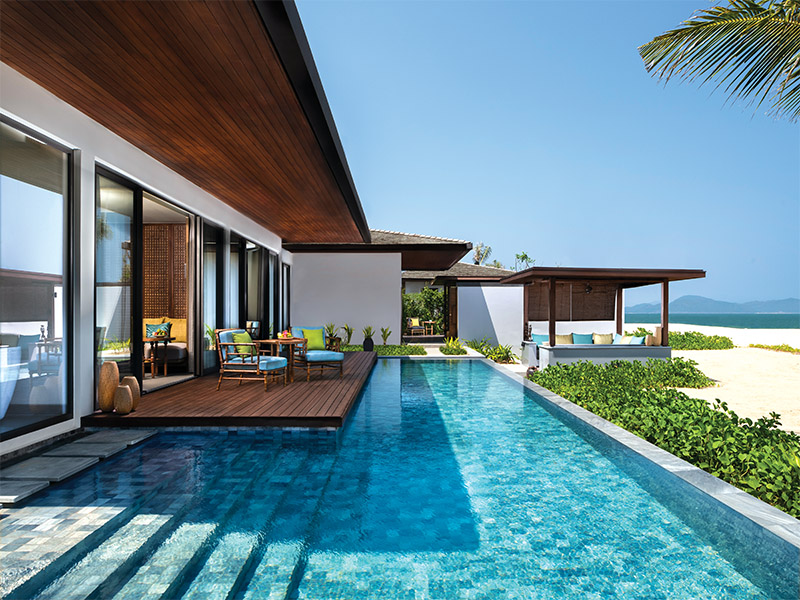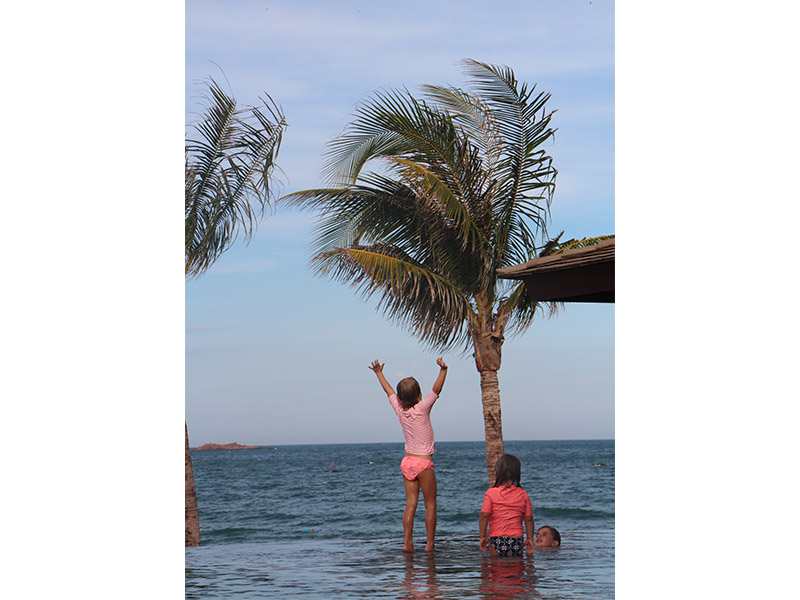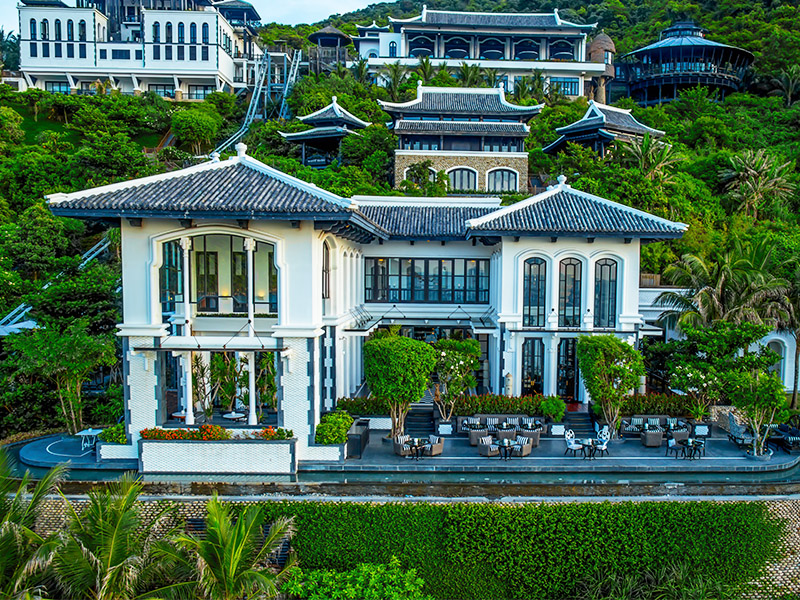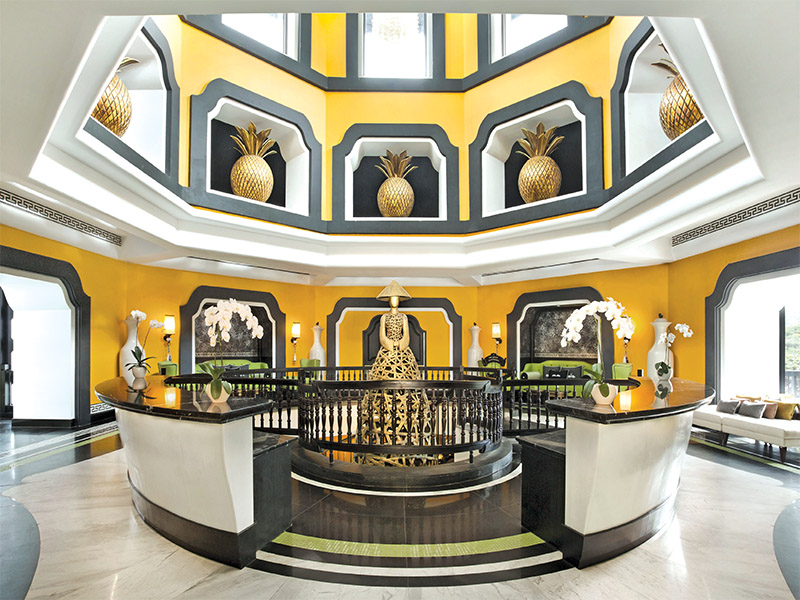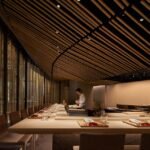[ad_1]
Hoi An makes many a traveller’s shortlist. But sleepier parts of the South Central Coast in Vietnam are asking visitors to stay and play too.
Beyond the hotspots
What’s one of the most talked-about places in Asia right now? Vietnam’s Son Doong cave. The world’s largest cave – 5km long, 200m high – recently opened to tourists. And virtually every travel publication on the planet has been writing about it. Then, in the middle of 2019, Lonely Planet ranked Central Vietnam the 6th best place to visit in Asia Pacific for the coming year.
The area is enticing travellers to think beyond the country’s well-known “H” hotspots – Ho Chi Minh City in the south, and Hanoi and Halong Bay in the north. The South Central Coast (the eastern lower half of Central Vietnam) is even battling its own H-towns – Hoi An and Hue – for attention.
Quy Nhon
Villas and views
Ever been to Quy Nhon? Not many have. Just five years ago, tourism was virtually non-existent in this central Vietnamese city (pronounced “kwee nyawn”) set between rugged mountains and a gorgeous coastline. Anantara Quy Nhon Villas is trying to change that. Following the success of Nha Trang to the south, Quy Nhon enters the luxury fray with the Anantara as its first five-star international hotel.
With only 26 villas, the property is wonderfully intimate. There are six villa types. Choosing the right one is a matter of two decisions: location (beachfront or hilltop) and size (one or two bedrooms). We chose a bi-level Ocean View Pool Villa with pool on the bottom floor and living quarters on the top. This is a great choice for families with young children; you get the splendour of a private pool without the skittishness of having to watch the kids every second of every day. Extra-high balcony walls are constructed without horizontal (aka climbing) beams – another necessity for families.
Every villa has sweeping ocean views with front-row seats for sunrise. We awoke every morning to high-pitched, wall-shaking squeals of excitement over the psychedelic swirls of pink and orange filling the sky. Oh, kids and the joys of 5am wakeups. We could have pulled the blackout curtains but honestly, this view was too good for that.
Days here are long (see paragraph above…), but in the best of ways. The main pool is quiet until 4pm when the sun dips behind a western mountain, casting the entire property into warm shadow. Then guests come out in droves – and by droves, I mean, oh, three families. This is a good time to amble to the private beach where the sand is soft for tender young feet and the waves thrilling but manageable.
Essentials
Being away from it all has many benefits, but what about the drawbacks?
First, it’s a matter of forgotten sunscreen. Later, antibiotic ointment for a toddler toe injury. Do we have access to necessities and medical care if we need them? It turns out, we do. The staff ran into town to fetch our requests and were poised to call a nurse if the toe didn’t heal (it did). Anything the resort didn’t have, they got us at no additional cost.
The property has a small gym, and there’s a kids’ play area at the 63-room Avani sister resort next door. But the biggest draw is the Anantara Spa – arguably, the most stunning part of both properties. There are two menus – one for traditional services and another for Ayurvedic and Vietnamese wellness treatments. I loved my massage and facial but I really must try something new next time, like the singing ball chakra treatment or Shirodhara dripping oil therapy.
Intimate dining
The intimacy of the hotel is best felt at Sea.Fire.Salt, a glass-enclosed restaurant serving fresh seafood and the hotel’s house-made flavoured salt mixes (they offer 24). At breakfast, platters of smoked fish, charcuterie, cheese, yogurt and tropical fruit are delivered to the table alongside tall glasses of sweet Vietnamese coffee and homemade kombucha. Mains, like mixed berry crepes and quinoa bowls with coconut yogurt, chia seeds and goji berries, are made to order. Breakfast is serene and so very relaxing, a style I much prefer over big buffets.
Lunch and dinner are the same – with so few people, you needn’t bother with reservations. Just sit down where you want for a lazy meal of prawn gazpacho and wagyu beef-stuffed banh mi. To celebrate our wedding anniversary, we dined on lobster bisque and tuna steaks cooked tableside on 200-million-year-old salt bricks. The staff even took the time to hang fairy lights over a special table set up on the main lawn. Meanwhile, a babysitter watched over three sleeping kids back in the villa.
For sure, there are easier parts of Vietnam to get to. But the extra effort to reach Quy Nhon is rewarded with a chiller, less expensive five-star Vietnam villa experience.
Da Nang
A design delight
If you can judge a wedding’s formality by its invitation, then the same can be said of a hotel and its pickup service. As our train pulled into Da Nang, a Mercedes GLS 350 SUV awaited with sparkling San Pellegrino, Wi-Fi and iPad for choose-your-own tunes.
This is my introduction to the very big, very bold InterContinental Danang Sun Peninsula Resort, a property that has topped my hotel bucket list since it first opened in 2011.
Set within the Son Tra Nature Reserve, the 201-room Bill Bensley-designed hotel resembles a Vietnamese seaside village. There is no main building, rather the hotel is a series of freestanding houses built from the coastline to the top of a mountain peak. Bensley, a Harvard-educated, Bangkok-based architect and designer, is the mastermind behind some of Asia’s most jaw-dropping properties, including The Siam Hotel in Bangkok and The St. Regis Bali Resort. For a cool $38K, ardent fans can join him on a luxury tour of his Southeast Asian properties, complete with a helicopter tour over Angkor Wat and dinner in his Thai home
.
Details, details, details!
If the devil is in the details, then this place is the underworld. Here, the details have details. Every sink is bespoke, every beam carved, every entranceway arched. “Basic” simply won’t do. Not for a water faucet. Not for a walkway. There is something interesting everywhere you look.
This is especially true of the Royal Residence by the Sea – the grand dame of the property. The villa has two levels with dual living rooms (one anchored by a baby grand Steinway piano), a dining room set for ten, a master bedroom overlooking a 13-metre lap pool and a mesmerising view of Monkey Bay. The room comes with a private butler, in our case Vu, whose job is not so much to do as you ask but to predict what you want. He zooms us around the property on a buggy, reminding us of spa appointments, dropping off three-tiered trays of afternoon tea and greeting us with fresh coconuts after a session of paddleboarding at the beach. He’s less butler, and more your right brain – because who really wants to think on holiday?
If this is the best the hotel has, what about its most basic? Classic Rooms have the same soaring ceilings, the same marble tubs (mined from Non Nuoc, or Marble Mountain, south of Da Nang), and the same smashing coastal views. These rooms are perfect for a couple or a small family.
Family-friendly
Speaking of families, the resort is all about them – and at the same time, not. There are separate pools for families and couples, and kids aren’t allowed in the Club Lounge, which serves breakfast, afternoon tea and evening cocktails. They do, however, rule the roost at Planet Trekkers, a fab kids’ club with supervised hourly events like yoga and cookie decorating. Ever seen one of those claws-out legs-splayed cat-bathing videos on YouTube? That was me trying to extract my own three, a fight we didn’t wage during 6pm movie time, affording us an easy couples-only dinner – no babysitter required.
The resort’s 39 hectares (about the same size as West Kowloon Cultural District) can be explored through a daily wildlife tour hosted by resident zoologist Anthony Barker. Through it, we learned that the “moth” we saved that morning was actually a Brown King butterfly and that the resort is home to six different monkey families, each with 10 to 30 members each. Monkeys are, of course, adorable when they aren’t making complete menaces of themselves. This doesn’t include the critically-endangered red-shanked douc langur, a docile primate of which 800 of the estimated 1,200 left in the wild live around the resort.
Fine dining and relaxation
The food is remarkable, and not just at La Maison 1888, a restaurant helmed by three Michelin-starred chef Pierre Gagnaire. There’s also Barefoot, with lobster, sea bass and colossal king prawn dishes served on the beach. While the mountain-top Citron is a Vietnamese powerhouse with offerings separated by their North, Central and South origins. Even in monsoon season (November to January), the hotel is popular for the HARNN Heritage Spa, which offers complimentary Mixoilogy classes. In one, I discover my prominent element is metal (rigid, inflexible – moi?) and my daughter an earthy wood (energetic, independent – definitely). We both took home a complimentary essential oil blend: a lemongrass one to lighten me up and a light rose mix to ignite her six-year-old “passions.”
The spa boasts a Pedi:Mani:Cure Studio by renowned French podiatrist Bastien Gonzalez – one of 20 in the world – which has been named the World’s Best Nail Studio Brand for four years in a row. Everything you know about pedicures (foot soak, cuticle cutting, nail colour) is out in this dry treatment performed by a trained podiatrist. To try it equals addiction.
Exploring Central Vietnam
From the hotel, you can explore some of the most famous spots in Central Vietnam – UNESCO World Heritage sites like Hue, Hoi An and the ancient temples of My Son. The Ba Na Hills are also close. It’s these, plus the lesser-known and harder to reach spots – places like the Red Sand Dunes and the caves of Phong Nha-Ke Bang National Park – that are really setting the region on fire.
Central Vietnam Fact file
Getting there:
Quy Nhon: It’s a two-hour-40-minute flight to Ho Chi Minh City, followed by a one-hour flight to Phu Cat Airport. Allow at least two hours between flights to retrieve your luggage and transfer terminals. Then, it’s a 50-minute car ride to the hotel.
Quy Nhon to Da Nang: Fly or take a 5.5- hour train ride. (Approximately HK$150 per person for a private berth with four beds.) Both hotels can assist with train ticket bookings.
Da Nang: Multiple airlines fly from HK to Da Nang (1 hour 45 minutes).
Staying there:
Anantara Quy Nhon: Villas From US$560 anantara.com/en/quy-nhon
InterContinental Danang Sun Peninsula Resort: From US$480 ihg.com/intercontinental
See more in ourTravel section:
Travel News: Places to stay and play
Exploring the Australian Outback
[ad_2]



